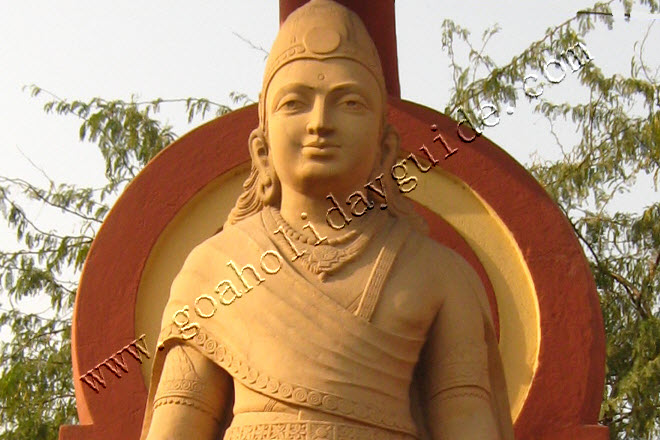Goa Under The Maurya Empire
Mauryan Evidence
The earliest evidence related to the Mauryas and their Vassals the Bhojas, that has been found to date is that of the copper plate grant issued from Chandrapura by King Devaraja Gominam, in the third century A.D. bestowing upon two priests the rights to c
The ancient recorded history of Goa that can be traced back as far as it is possible to do so clearly begins from the time of the Mauryan empire in India. The Girnar rockcut edicts of the great Mauryan emperor Ashoka of Pataliputra (Patna) refer to the people of the Konkan, and their rules as the Bhojas who were the vassals of the Maurya empire.
The Western Maurya Kingdom comprised the Lata or South Gujarat, coastal Maharashtra, Goa, and approximately half of the North Kanara district. After the Maurya Empire had passed its meridian in the 2nd century BC its satrap in Aparanta made himself independent. A scion of the imperial Mauryas, he founded a dynasty that ruled over the west coast for nearly four centuries from its capital Shurparaka or modern Sopara. This dynasty was known as the Konkan Mauryas. Goa was called Sunaparant by the Mauryas.
Chandragupta Maurya incorporated the west coast of India in his province of Aparanta, and the impact of Magadhan Prakrit, the official language of the Mauryan Empire, on the local dialects resulted in the formation of early Konkani, as was the case with other Aryan vernaculars.
Spread of Buddhism in Goa
During this era Buddhism was introduced to Goa. A native Goan named Purna, also known as Punna in Pali, who traveled to Sarnath is considered a direct disciple of Buddha, popularised Buddhism in Goa in 5th century B.C. Vestiges of Buddhism of the Hinayana sect, belonging to the pre Christian era have been found at Rivona, Lamgaon, Harvalem and near Priol. According to the Buddhist text of Amavatur and Saddarmaratnakare composed in a later period, Punna, was originally a resident of Sunapurant, identified with the present Goan region from the village of Zambaulim. Purna was received into the Buddhist fold by the Buddha himself and helped spread that faith in this region and further south up to Sri Lanka of today.
Purna is reported to have transformed the Goan people, once violent and rancorous, into a peaceful and benevolent community. A stone statue of the Buddha in the meditation pose was discovered in Colvale village in Bardez in Northern Goa. It is believed to belong to the 2nd century AD, apparently influenced by Greek art.
It may be noted that the Buddhist monk Dharmarakshita, deputed by the emperor Asoka to the Rashtrakutas and the Bhojas from the Konkan, was a Greek convert to Buddhism. Traces of Buddhism and Jainism too have been found in Chandor, about 66 kms. from Panaji in Salcete. The Kadamba kings who ruled from Gopakapattam for a couple of centuries had wholeheartedly adopted the religion, to an extent of discriminating against their earlier Hindu coreligionists before returning to their original fold.
